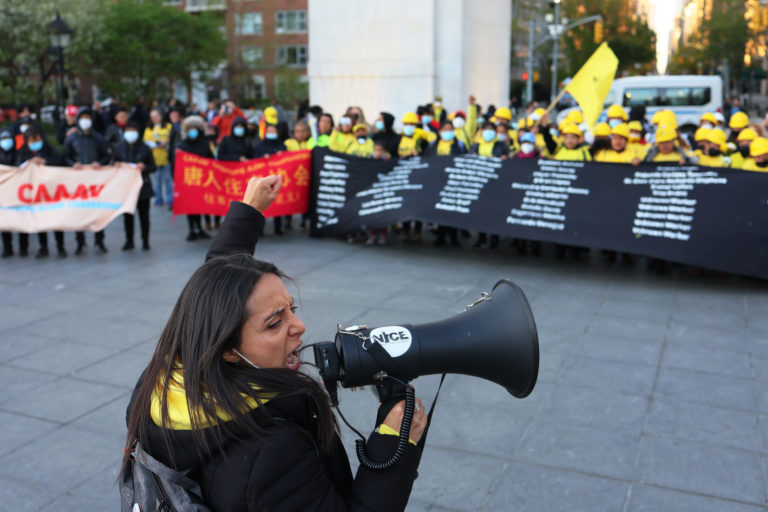
Andrew Strom is a union lawyer based in New York City. He is also an adjunct professor at Brooklyn Law School.
Title VII of the Civil Rights Act prohibits employers from discriminating against workers because of their race, color, religion, sex, or national origin. Does a worker state a claim under Title VII if she is either denied a transfer or involuntarily transferred if the two positions offer the same pay and neither position is clearly more onerous? The Supreme Court will soon decide this issue in a case brought by Jatonya Muldrow, a sergeant in the St. Louis Police Department. The dueling amicus briefs in the case call attention to how often this issue arises, with worker advocates explaining why transfers matter to workers and employer groups raising the specter of a flood of litigation. But, what I am most struck by is how the protections workers can negotiate in a collective bargaining agreement would go a long way toward addressing the issues raised in this case.
In 2017, after nine years of working in the Intelligence Division, based at the Department’s headquarters, Muldrow was transferred to the Fifth District, a discrete geographic unit. Even though the pay was the same, for a variety of reasons Muldrow viewed her new assignment as less desirable. The National Employment Law Project filed a brief discussing cases where workers objected to a transfer that resulted in a less appealing work space, more exposure to inclement weather, or reporting to a different supervisor as well as cases where workers had been denied transfers that provided for more flexible hours, different days off, or a shorter commute. The fact that workers keep bringing these cases suggests that decisions about transfers are a recurring source of tension in the workplace. And the Supreme Court’s decision to hear this case reflects that employers view these kinds of claims as more than a minor nuisance.
Even if the Court rules in Muldrow’s favor, a Title VII lawsuit is a less than ideal remedy for a worker who is denied a transfer or transferred against her wishes. First there is the problem of finding a lawyer. Then, there is the lengthy litigation process. But, more fundamentally, even if the transfer decision seems obviously unfair, the employer’s reasons may have nothing to do with the worker’s race, color, religion, sex, or national origin. What if a manager just wanted to give the position to a friend or a valued customer’s relative? One reason workers resort to filing lawsuits is that they have no other meaningful mechanism to challenge an employer’s personnel decisions or even to learn about the reasons for the decision. A collective bargaining agreement can address both of these issues. First, a collective bargaining agreement can require employers to notify employees of vacant or newly created positions and impose criteria for filling those positions. This could include listing the qualifications for a position and awarding positions to qualified applicants based on seniority or other objective criteria. A collective bargaining agreement could similarly place limits on involuntary transfers, seeking volunteers first, and then moving only the most junior employees against their wishes. In addition to bargaining over how transfer decisions are made, collective bargaining agreements typically include a grievance procedure where unhappy workers can contest whether the employer adhered to the terms of the agreement. Through the grievance procedure, a disgruntled worker may learn that the worker who got the position scored higher on a test or had more seniority or more relevant experience. And knowing that there will be a grievance procedure where management is required to show its cards, managers will be more careful to ensure that supervisors are not simply awarding positions based on favoritism.
Unionizing won’t automatically solve these problems. Managers tend to resist any attempt to limit their discretionary authority whether those attempts take place at the bargaining table or in court. But, collective bargaining at least gives workers a mechanism to try to anticipate these issues and address them before they lead to litigation. Poor wages and benefits often motivate workers to organize, but if those are the only issues, employers can usually stop an organizing drive by giving workers a raise. Organizers have a saying that the boss is the best organizer, and what they mean is that workers are most likely to organize when their employer mistreats them. If workers come to the bargaining table united in their desire to obtain a fairer system for filling vacant or newly created positions, most likely they will walk away with a contract that at least places some limits on management’s discretion.
Using collective bargaining to address the lack of transparency and perceived unfairness regarding transfer decisions also provides an opportunity for a win-win solution for both workers and management. For workers, the benefits are obvious – even if you don’t get the position you want, it’s far less aggravating if you understand the process and the reasons why the job went to someone else. For managers, having a more rational and open process will not only create a more contented workforce, but it will likely lead to better decision-making.
Litigation is a terrible solution to workplace problems. But, when employers fiercely resist unionization, they leave workers with little choice but to file lawsuits to redress their workplace grievances.










Daily News & Commentary
Start your day with our roundup of the latest labor developments. See all
December 22
Worker-friendly legislation enacted in New York; UW Professor wins free speech case; Trucking company ordered to pay $23 million to Teamsters.
December 21
Argentine unions march against labor law reform; WNBA players vote to authorize a strike; and the NLRB prepares to clear its backlog.
December 19
Labor law professors file an amici curiae and the NLRB regains quorum.
December 18
New Jersey adopts disparate impact rules; Teamsters oppose railroad merger; court pauses more shutdown layoffs.
December 17
The TSA suspends a labor union representing 47,000 officers for a second time; the Trump administration seeks to recruit over 1,000 artificial intelligence experts to the federal workforce; and the New York Times reports on the tumultuous changes that U.S. labor relations has seen over the past year.
December 16
Second Circuit affirms dismissal of former collegiate athletes’ antitrust suit; UPS will invest $120 million in truck-unloading robots; Sharon Block argues there are reasons for optimism about labor’s future.